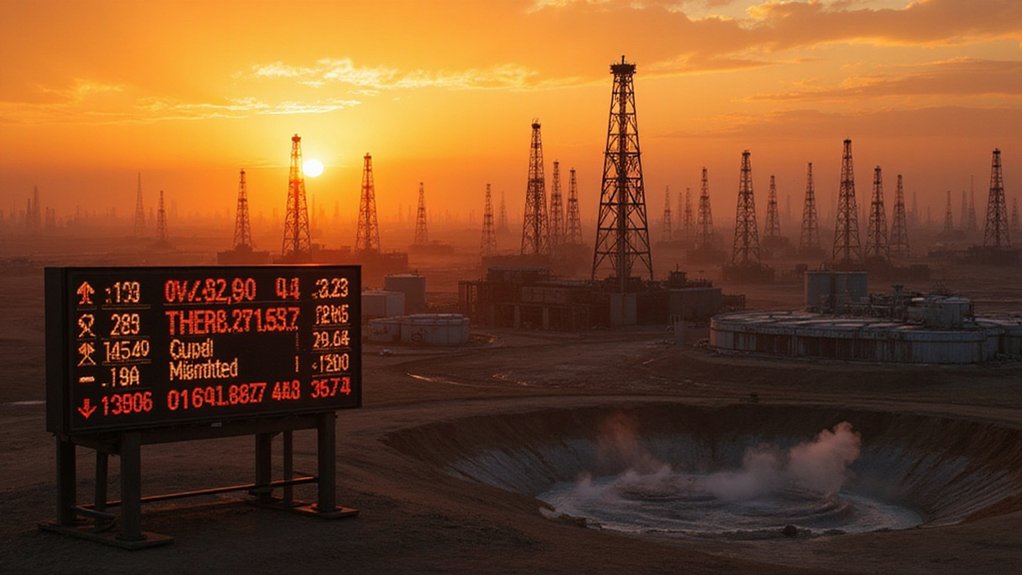New climate litigation is using emissions data from a recent Nature study to target fossil fuel companies. While global greenhouse gas emissions decreased by 0.47% in February 2025, fossil fuel operations still produced 870.79 million tonnes of CO2e. Coal emissions dropped by 11%, but oil declined only slightly. This scientific evidence is strengthening court cases against major polluters. The detailed sector-specific data provides unprecedented specificity for establishing responsibility in climate battles.
While global greenhouse gas emissions have shown modest decreases in early 2025, the fossil fuel industry continues to be a major contributor to climate change. Recent data reveals that global greenhouse gas emissions for February 2025 totaled 5.04 billion tonnes CO2e, representing a 0.47% decrease compared to February 2024. This marks the third consecutive month of year-over-year emission declines since the COVID pandemic.
Fossil fuel operations generated 870.79 million tonnes CO2e in February 2025, showing a small 0.39% decrease from the previous year. A key study published in Nature on April 23, 2025, provides new scientific data on these emissions, potentially changing the landscape of climate litigation against fossil fuel companies. This data is now being used as evidence in court battles against major polluters.
New scientific evidence from Nature’s 2025 study is fueling climate litigation against fossil fuel giants despite minimal emission reductions.
The manufacturing sector remains neck-and-neck with fossil fuel operations, producing 873.74 million tonnes of emissions in February. Both sectors represent major contributors to global climate change. Coal emissions have dropped considerably by 11%, while oil emissions declined by just 0.3%, showing uneven progress in different fossil fuel categories. Aviation emissions saw a 5.5% surge in 2024 amid record passenger demand, indicating continued challenges in certain transportation sectors. Transportation emissions overall have experienced the greatest decline among all sectors at 1.29%.
China continues to lead global emissions with 1.47 billion tonnes CO2e in February 2025, a slight 0.21% increase over February 2024. Meanwhile, United States emissions declined during the same period. The top five emitting countries still account for most global emissions, with varied reduction efforts across major economies.
Methane emissions, a potent greenhouse gas, remained nearly flat at 31.70 million tonnes in February 2025. Climate TRACE’s extensive tracking system now reports emissions with only a 60-day lag time, providing nearly real-time data on global greenhouse gas outputs. The agricultural sector continues to be a significant source of methane release from livestock production and farming activities.
The first two months of 2025 saw total global emissions of 10.32 billion tonnes CO2e, 0.55% lower than the same period in 2024. While these modest declines represent progress, they highlight how deeply embedded fossil fuel use remains in the global economy, even as the industry faces increasing legal scrutiny over its climate impacts.
References
- https://www.iea.org/reports/global-energy-review-2025/co2-emissions
- https://www.climatetrace.org/news/climate-trace-releases-february-2025-emissions-data
- https://cleantechnica.com/2025/05/03/new-data-on-fossil-fuel-industry-emissions-could-play-pivotal-role-in-climate-litigation/
- https://www.eia.gov/outlooks/aeo/
- https://www.climatetrace.org/news/climate-trace-begins-monthly-data-releases-with-new









